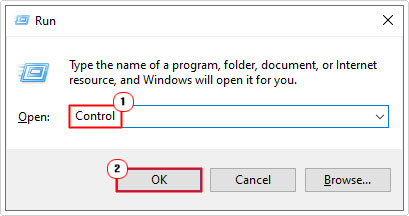| Attention Before you read this post, I highly recommend you check out my resources page for access to the tools and services I use to not only maintain my system but also fix all my computer errors, by clicking here! |
End users that stumble upon connectivity issues may encounter, when they run the Network Diagnostic tool, the “Windows Can’t Communicate with the Device or Resource (Primary DNS Server)” error notification. So what is it, why does it occur, and what can you do about it?
The World Wide Web or Internet (as it’s widely known by) is an integral part of our day to day lives. This makes ours ability or inability to connect to the internet, as important as anything else, whether that be eating, paying our bills or taking a nap. It’s for this reason, why, such an error can be so frustrating.
The DNS servers for your internet connection are usually provided by your ISP (Internet Service Provider). The purpose of the DNS server is to convert the names of websites into IP addresses, making web surfing a possibility. Your connection will also have a failsafe, in the form of a secondary DNS server. However, there are instances when issues can arise, which can result in an unstable (connection) or no connection at all.
In this tutorial, I will provide you with a number of solutions that have proven effective at fixing “Windows can’t communicate with the device or resource” errors. But before we get to those solutions, let’s take a look at its common causes.
What Causes Windows Can’t Communicate with the Device or Resource Errors?
When looking at the “Windows can’t communicate with the device or resource (Primary DNS Server)” error, there are a number of things for you to consider.
Below is a rundown of the most common causes:
- Corrupted or outdated NIC drivers: A driver belonging to your network device(s) could be outdated or corrupted, inhibiting your connection to the web.
- Adapter settings are incorrect: It’s possible one or more settings belonging to your network adapter (such as your DNS servers) may be incorrect.
- Problem(s) with the DNS Server: The DNS servers your connection is attempting to utilise may be down.
- Corrupted HOSTS file: The HOSTS file may have been altered, resulting in an inability to communicate with the resource or device, as the error message states.
- Virus infection: A malicious file may have infiltrated and corrupted integral system files.
That’s snapshot of the possible causes for the error in question. Now we have that out of the way, let’s take a look at the various ways you can fix it.
How to Fix It
In the vast majority of cases, research has shown that the “Windows can’t communicate with the device or resource Primary DNS Server” error message is oftentimes the result of a configuration issue with your router. Other possibilities, may involve, a recent settings change
All-in-all, the first thing you’ll want to try is a router restart. This is a relatively simple process, which should entail:
1. First, unplugging the router from the mains.
2. Waiting, at least 60 seconds, and then plugging it back on.
If that fails to fix the problem, you may want to consider resetting the router. The method to do that however, does vary, depending on the brand and version of device. Which is why I recommend you consult the manual of your router for further help.
That said, if a router restart (or reset), fails to fix the “Windows can’t communicate with the device or resource” error, then you should attempt the additional solutions below:
Update NIC Drivers
If restarting (or resetting) the router failed to fix the “Windows can’t communicate with the device or resource” error, then you may want to consider updating the drivers for your NIC device(s).
You should be able to download the latest drivers from the manufacturer’s website. However, before you can begin the process, you must first establish how you connect to the internet. So if it’s via Ethernet port, then you will need to download the latest drivers for your motherboard.
If it’s by wireless connection, then you’ll need to download the latest drivers for your wireless adapter. However, you will also need to know whether or not your wireless adapter is a standalone device.
Ultimately, depending on your level of expertise, this can be quite complicated and time-consuming if you don’t know exactly what you’re doing.
For this reason, I’d recommend you gave the driver automation tool DriverFinder a try. As it will carry out all these steps automatically, within a couple of clicks.
Thus, if that sounds more favourable to you, then visit the link below:
CLICK HERE TO CHECK OUT DRIVERFINDER
Use Windows Repair Tool to Fix Windows Can’t Communicate with the Device or Resource Error
Before we get to any of the manual methods below, I must first introduce you to, probably the best method of fixing a wide plethora of problems on your computer.
If you are a beginner to intermediate computer users, then a more comprehensive, yet simpler solution should be more preferable.
This brings us to the Windows repair tool Advanced System Repair Pro, which is, as the name states, an advanced repair tool, capable of fixing a wide array of error types.
It’s a fairly simple tool to use, making it accessible to all.
Anyway, if that interests you, then I recommend you visit the link below for more information:
CLICK HERE TO CHECK OUT ADVANCED SYSTEM REPAIR PRO
 The solution(s) below are for ADVANCED level computer users. If you are a beginner to intermediate computer user, I highly recommend you use the automated tool(s) above! The solution(s) below are for ADVANCED level computer users. If you are a beginner to intermediate computer user, I highly recommend you use the automated tool(s) above! |
Edit IPv4 & IPv6 Settings
IPv4 or Internet Protocol Version 4 is the old standard used for networks today. IPv4 has an address limitation of around 4 billion. IPv6 (Internet Protocol Version 6) however, is a more advanced version of the old IPv4 standard. It has essentially, no address limitations, allowing for an infinite number of potential IP addresses.
So, for this solution, we will attempt to alter the settings for both protocols, to see whether or not it fixes the DNS problem.
To begin, please follow the steps below:
1. First, boot into your system as a full administrator.
2. Then press  + R, type Control and click on OK.
+ R, type Control and click on OK.

3. This will bring up Control Panel, now, click on Network and Internet.

4. On the Network and Internet screen, click on Network and Sharing Centre.

5. This will take you to a screen where you can view your basic network information and set up connections. Now, click on the Ethernet or Wireless next to Connections.

Note: This will vary, depending on how you access the internet.
6. This will bring up a Connection Status applet, from here, click on Properties.

7. Your Connection Properties applet will pop up, double-click on Internet Protocol Version 4 (TCP/IPv4).

8. The Internet Protocol Version 4 (TCP/IPv4) Properties applet will appear. Now, select Obtain an IP address automatically and Obtain DNS server address automatically and click on OK.

9. Repeat step 8 for Internet Protocol Version 6 (TCP/IPv6).
10. Close everything, then check whether or not the connection problem has been fixed.
Reset Network Connection Settings
Another method you can use, involves flushing all DNS and IP configuration data. As its possible this data has been corrupted or misconfigured, resulting in the error connection problem.
For instructions on how to reset your network connection settings, you can check out my post on fixing DNS_PROBE_STARTED errors.
Edit HOSTS File
As previously noted, it’s possible the HOSTS file has been corrupted or altered without your knowledge. Resulting in the “Windows can’t communicate with the device or resource” error. Fortunately, you can set your HOSTS file back to its default by following the steps in my post on fixing Windows Update error 0x80073701.
Use Public DNS
If the “Windows can’t communicate with the device or resource” error continues to persist, even after attempting all prior error fixes, then you may want to try switching to a public DNS.
You can find many of them, but I personally recommend you use Google’s DNS servers. For instructions on how to set them up, check out my post on fixing error code 0x80072ee7.
Note: You may want to try contacting your ISP (Internet Service Provider) and asking them for a list of DNS servers that you can implemented.
Moreover, if switching DNS fails to fix the problem, then it’s likely the connection issue is the fault of your ISP and not your system. In which case, you will need to ask them (ISP) to fix it.
Are you looking for a way to repair all the errors on your computer?

If the answer is Yes, then I highly recommend you check out Advanced System Repair Pro.
Which is the leading registry cleaner program online that is able to cure your system from a number of different ailments such as Windows Installer Errors, Runtime Errors, Malicious Software, Spyware, System Freezing, Active Malware, Blue Screen of Death Errors, Rundll Errors, Slow Erratic Computer Performance, ActiveX Errors and much more. Click here to check it out NOW!

